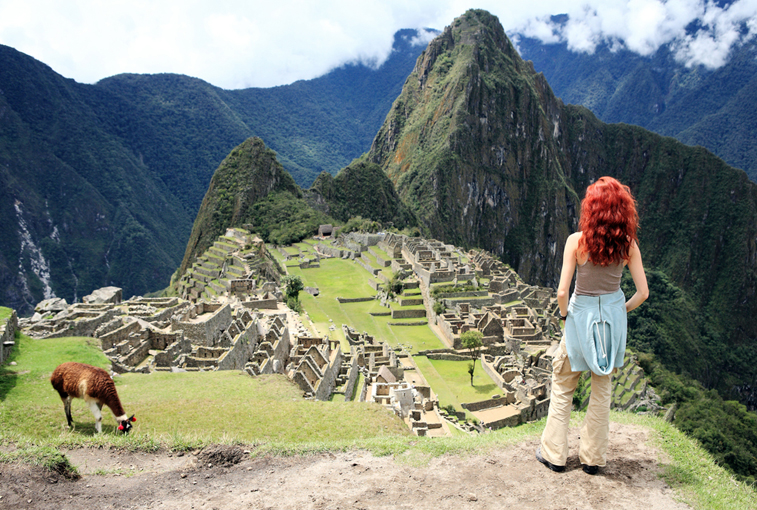The world's belly button
Friday, August 22, 2014

Guido Piotrkowski
Visit Cuzco, the ancient capital of the Incan Empire and the entrance to the ruins of Machu Picchu. Just like an onion, its history is composed of layers between the antique American culture and the European Renaissance.
Legend tells that the first Inca, Manco Capaq, and his sister, Mama Ocllo, came to Cuzco through Lake Titicaca in order to establish the capital of the Incan Empire after a revelation from the sun god, Inti. Cuzco is according to Quechua tales, the belly button, the center, or the place where the universe was born.
So it became known as the place where the Tawuantinsuyu would expand, the four regions or cardinal points of this pre-Hispanic civilization, which extended from the southern border of Colombia, to the north of Argentina through Ecuador, Peru, and Bolivia.
Another less epic and romantic version based on archaeological findings, suggests that the city was inhabited by the people escaping Tiwuanaku, a weakening kingdom north of Bolivia, who found this place of abundant water and fertile soil for their crops.
Incas were prosperous farmers and brilliant astronomers. Their crops were planted in accordance with the movement of celestial bodies; and the Sun, Moon, lightning, and rainbows were their prime deities. They were also great builders who constructed temples bathed in gold to honor their gods, built the mythical city of Machu Picchu, and the Fortress of Sacsayhuaman.
Even though the Inca people were warriors who subdued the rest of the Andean civilizations, they were not able to stand against Francisco Pizarro and his comrades, who came in search of gold and silver just when the empire was breaking apart due to the fight for power between the brothers Huasar and Atahualpa, the last remaining emperors in the 14 Inca lineage, of which Pachacutec was the most important king.
In order to subdue the Incan people, the Spaniards demolished their temples and over the ruins they built churches; on top of the Incan foundations they built colonial houses, and on top of their pagan images they painted fresh Christian faces. The result of these cultural layers is the city of Cuzco, declared World Heritage by UNESCO in 1983.
Plazas, churches, temples, and ruins
Each step you take in Cuzco holds the history of many centuries in it, such as balconies and colonial arcs, pre-Hispanic streets, and monumental ruins. The Main Square or Huacaipata, which holds the statue of emperor Pachacutec in the center, is located in the middle of the historic district and is a good starting point to get to know the city which sits at 3,400 meters above sea level. In front is the Cathedral, an architectural jewel built on top of the Incan Palace of Wiracocha. The Sanctuary, built with the shape of a Latin cross, is one of the most beautiful in the continent. Inside is a collection of over 400 sacred art paintings. Among the many churches that exist that showcase the Cuzco Baroque style, one that stands out the most is the Company of Jesus, which is located in the same square as the Cathedral. Very close by lies the Church of Santo Domingo, raised over Corinkancha, the ancient Sun Temple which still holds traces of the original sanctuary.
Two kilometers outside the city you can find the ruins of Sacsayhuaman, a colossal ceremonial fortress which took 200 years to build, and where giant stones weighing 120 tons fit perfectly. People celebrate here every 24th of June, along with the winter solstice, the Inti Raymi celebration or Sun festivity, which recreates the ancient Incan ceremony.
Peruvian Cuisine, which has been trending in recent times, is also one of Cuzco’s strong dishes, with alternatives for all tastes and pockets.
Saint Peter’s Market is an excellent place to try any of the local dishes, have a fresh juice drink and buy crafts. The innovative Pisco Museum is an outstanding alternative to get to know the history of this nation’s local spirits, have a good ceviche, have one of the many varieties of drinks, and gather strength to start your journey to Machu Picchu.
The sacred citadel
Legend says that Pachacutec spent five years of his life searching for the perfect spot for Machu Picchu’s final resting spot, and that he finally found it in the middle of the jungle because it could supply basic needs: access to water, a strategic location, and construction materials.
It is believed to have been inhabited for 100 years and that it was abruptly abandoned due to the Spanish advance on Cuzco.
In 1911, the American Explorer Hiram Bingham casually ran into the ruins hidden behind the undergrowth as he was searching for the lost city of Vilcabamba. The Historic Sanctuary of Machu Picchu, located 2,500 meters above sea level, was declared World Heritage by Unesco in 1983. There are two ways to get here: taking the train from Ollantaytambo, one of the colorful towns of the Sacred Valley, reaching Aguas Calientes, located at the foot of the ruins. From there an omnibus leaves the visitors at the gates of the archaeological complex. Those who like adventure may also recreate the ancient Incan Trail on foot for three days.
Ideally, people should arrive before dawn and wait for the sun to come out. The House of Guardians, one of the highest places, is the best spot to wait for the sunrise. From here, people also get a panoramic view of the archaeological complex.
After the descent and going through the halls of the Sun Temple or the Temple of the Three Windows, it is said that visitors can climb the center of the ruins to receive the energy of the Intywatana, the holy stone; and ascend the Moon Temple in the Huayna Picchu, the “young mountain”, which rises as the eternal guardian of the sacred citadel.
You may find more destination articles at www.aviancaenrevista.com.
